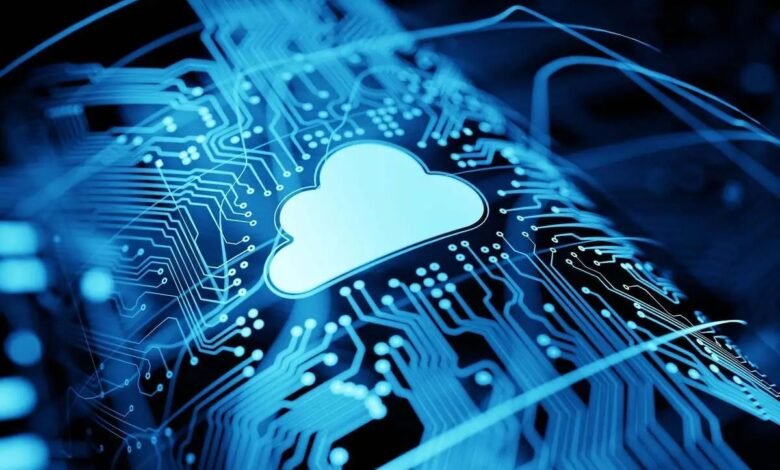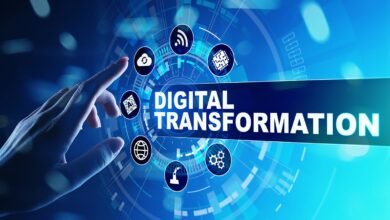
Cloud computing has come a long way since its introduction in the early 2000s. In recent years, it has become the go-to solution for many businesses and individuals alike. With the increasing adoption of cloud computing, the technology is constantly evolving, and it’s essential to keep up with the latest trends to stay ahead of the curve. In this article, we’ll look at the top 10 cloud computing trends we can expect to see in 2023.
Top 10 Cloud Computing Trends
With the increasing adoption of cloud computing, the technology is constantly evolving, and it’s essential to keep up with the latest trends to stay ahead of the curve.
Edge Computing

Edge computing is becoming increasingly popular, allowing faster and more efficient data processing. With edge computing, data is processed closer to the source rather than sent to a centralized data center. This reduces latency and improves overall performance, making it a valuable addition to cloud computing.
Hybrid Cloud
A hybrid cloud is a combination of public and private cloud solutions. It allows businesses to take advantage of both benefits while controlling their data. In 2023, we can expect to see more companies adopting hybrid cloud solutions as they seek to strike a balance between flexibility and security.
Serverless Computing
Serverless computing is a cloud computing model where the provider manages the infrastructure and automatically allocates resources as needed. This eliminates the need for businesses to manage their servers, reducing costs and increasing efficiency. In 2023, we can expect to see an increase in the adoption of serverless computing as companies look to streamline their operations.
Artificial Intelligence (AI)
AI is already making its mark on cloud computing, and in 2023, we can expect to see it becoming even more integrated into cloud solutions. AI can help businesses to automate tasks and make more informed decisions based on data analysis. This will be particularly valuable for companies that handle large amounts of data.
Blockchain
Blockchain is a distributed ledger technology that allows for secure and transparent data sharing. It has already made waves in industries such as finance and logistics, and in 2023, we can expect to see it being integrated into cloud solutions. This will allow for more secure and transparent data sharing, which will be valuable for businesses that handle sensitive data.
Multi-Cloud
Multi-cloud uses multiple cloud providers to meet a business’s needs. It allows companies to take advantage of the strengths of different providers and avoid vendor lock-in. In 2023, we can expect to see more enterprises adopting multi-cloud solutions as they seek to optimize their cloud operations.
Internet of Things (IoT)
IoT devices generate vast amounts of data, which can be challenging to manage using traditional computing solutions. Cloud computing offers a scalable and efficient solution for managing IoT data, and in 2023, we can expect to see more businesses adopting cloud solutions for their IoT needs.
Read More: The 15 Biggest Business Trends In 2023
Quantum Computing
Quantum computing is a new type of computing that offers the potential for much faster data processing. While it’s still in the early stages of development, in 2023, we can expect to see more businesses exploring the potential of quantum computing and its integration with cloud solutions.
Containerization
Containerization is a method of packaging software into standardized units called containers. It allows for more efficient deployment and scaling of applications, making it a valuable addition to cloud computing. In 2023, we can expect to see more businesses adopting containerization as they seek to streamline their application deployment processes.
Cloud-Native Architecture
Cloud-native architecture is a design approach that is optimized for the cloud. It allows for more efficient and scalable application development, deployment, and management. In 2023, we can expect more businesses to adopt cloud-native architecture as they seek to maximize the benefits of cloud computing.
FAQs
- What is cloud computing? Over the Internet, cloud computing delivers computing services, including servers, storage, databases, networking, software, and analytics.
- What are the benefits of cloud computing? The benefits of cloud computing include cost savings, scalability, flexibility, reliability, and security.
- What is a hybrid cloud? A hybrid cloud combines public and private cloud solutions that allow businesses to take advantage of both benefits while maintaining control over their data.
- What is serverless computing? Serverless computing is a cloud computing model where the provider manages the infrastructure and automatically allocates resources as needed.
- What is cloud-native architecture? Cloud-native architecture is a design approach optimized for the cloud, allowing for more efficient and scalable application development, deployment, and management.
Conclusion
In conclusion, cloud computing is constantly evolving, and in 2023, we can expect to see these top 10 trends impacting the industry. From edge computing to cloud-native architecture, businesses will adopt these trends to improve their operations and stay ahead of the competition.
Read More: Top 10 Tech Trends in 2023 Everyone Must Be Ready For








3 Comments